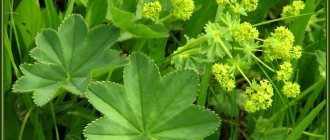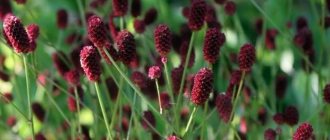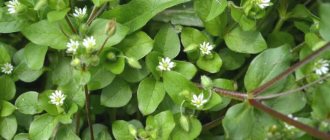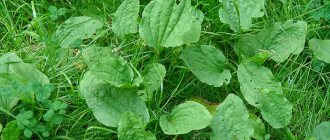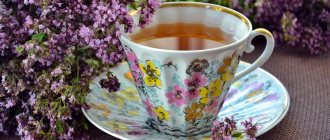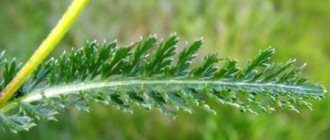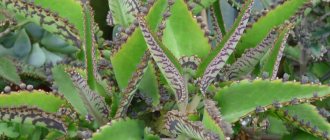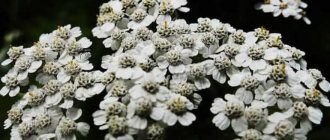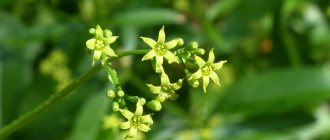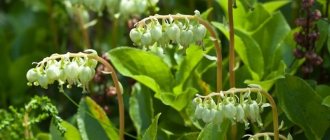A valuable forage plant, yellow sweet clover, or, as it is popularly called, sweet clover, ground or Italian grass, helps in the treatment of many diseases. Valued for its strong anticonvulsant effect, it has an analgesic, wound-healing and expectorant effect. In Avicena’s book “The Canon” the yellow sweet clover is called the “Royal Crown”. On the Agronom.guru portal you will find all the necessary information about yellow sweet clover and its properties.
Yellow clover
Description
Yellow clover is a plant with a two-year life cycle. During the first year, a stem grows without flowers or fruits, which dies by winter. In spring, flowering and fruiting stems grow from the root collar.
The stem of the plant is straight, branched up to 15o cm in height. Small flowers on elongated peduncles are united in hanging axillary inflorescences. Belongs to the legume family. The fruit of the sweet clover is an ovoid gray bean with a pointed tip.
Yellow clover - legume family
Contraindications, possible harm
Contraindications: individual intolerance and allergy to herbs of the legume family. The sweet clover plant is dangerous in the presence of the following conditions:
- Hypotension. Sweet clover is able to reduce blood pressure to critical levels.
- Exacerbation of urolithiasis. The grass accelerates the removal of fluid and can cause blockage of the ducts due to the active movement of deposits.
- Blood clotting disorder. Herbal remedies can lead to internal bleeding and impede wound healing.
Sweet clover causes harm to humans in case of overdose and violation of the application regimen. Side effects:
- tremor of the limbs;
- dizziness;
- loss of consciousness;
- nausea, vomiting;
- central nervous system paralysis;
- internal bleeding.
The use of herbal remedies should be stopped a month before the planned operation. The use of sweet clover cannot be combined with the use of anticoagulants.
Chemical composition
The content of useful chemical compounds in the plant is high. He has:
- proteins;
- microelements;
- glycosides;
- tannins and resins;
- organic acids;
- starch;
- choline;
- coumarin and its derivatives;
- flavonoids;
- saponins;
- vitamins B4 and E;
- carotene;
- tocopherol;
- essential oils.
A distinctive feature of sweet clover is its pronounced and persistent aroma of coumarin. It persists even in the dried plant.
The medicinal plant has a rich composition of beneficial components
Medicinal clover medicinal properties
The beneficial and medicinal properties of any plant are determined by its chemical composition. Coumarin, coumaric and melilotic acid were found in the herb sweet clover.
The main active ingredient of sweet clover is melilotin, from which coumarin is formed during drying and enzymatic digestion. Sweet clover also contains saponins, tannins, flavonoids, and mucus.
A small amount of essential oil is found in the flowers. The herb of the plant contains dicumarol, a special substance that prevents blood clotting. The flowering tops of sweet clover (flowers and leaves) are used as medicinal raw materials.
The healing properties of drugs from sweet clover have been confirmed experimentally, but in Russian scientific medicine, sweet clover is used extremely little.
Pharmacological properties
Preparations containing the active ingredient, coumarin, are prepared from yellow clover. It has a depressant effect on the nervous system and has an anticonvulsant and narcotic effect.
In large doses it acts as a poison.
An indirect anticoagulant, dicumarol, prevents the formation of blood clots, reducing blood clotting. Yellow clover is the basis for the preparation of drugs for the treatment of cardiovascular diseases.
Antithrombotic effect is one of the main therapeutic properties of yellow clover
Indications for use
The use of sweet clover for treatment is based on the properties of the beneficial substances in its composition. Medicinal sweet clover helps with:
- colds;
- bronchitis;
- problems of female reproductive organs;
- menstrual pain;
- asthma;
- diseases of the urinary and cardiovascular systems;
- gout and rheumatism;
- ear diseases;
- prostate adenoma;
- to increase lactation.
Ointments with sweet clover are used for dermatological problems. A patch with powder from crushed leaves is applied to purulent tumors, to treat abscesses, boils and pimples.
The active ingredients of yellow clover increase the content of leukocytes in the blood. They enhance therapy for radiation sickness. Sweet clover helps improve peripheral blood supply.
Fresh young greens are in demand in cooking and are used in soups and salads. The dried herb is used as a spice.
The medicinal plant yellow clover is actively used in the treatment of diseases of the cardiovascular system.
Contraindications for use
The medicinal properties and contraindications of yellow clover depend on the content of useful substances in it.
It should be remembered that the main active ingredient, coumarin, is poisonous if the dosage is exceeded.
Therefore, contraindications for taking drugs with sweet clover are not recommended to be ignored.
- individual intolerance;
- hemorrhagic vasculitis;
- hypotension;
- bleeding, especially internal;
- congenital and chronic kidney diseases;
- history of bradycardia;
- pregnancy;
- children under 18 years of age.
Overdose and individual sensitivity manifests itself
- nauseated with vomiting,
- dizziness,
- headache,
- loss of strength,
- hand tremors
It is strictly forbidden to take medicine with sweet clover and drugs that reduce blood clotting. 4 weeks before a planned medical operation, stop taking sweet clover.
For bradycardia, sweet clover is not used
Bleeding is a contraindication for the use of sweet clover.
Conclusion
Sweet clover is a medicinal herbaceous plant with an erect, branched stem. The bush can be seen in ravines, in meadows and fields, at the edge of the forest. Sweet clover contains coumarin, which normalizes blood circulation in the abdominal cavity, increases the number of leukocytes in the blood, and increases blood pressure. Preparations based on burkun have antiseptic, wound healing, analgesic, anticonvulsant, expectorant and laxative effects. They are indicated in the treatment of hemorrhoids, thrombophlebitis, lymphostasis, varicose veins (internally) and bruises, sprains, hemorrhages (externally).
Ointments and special pillows are prepared from the plant to relieve inflammation in the joints. Sweet clover honey and tea are used to combat colds and coughs, decoction and infusion - to increase lactation, relieve swelling, pain during menstruation. In addition, the leaves, roots and flowers of Burkun have found application in the food industry. They are added to salads, boiled, fried, baked and served as a side dish for fish and vegetable dishes. The safe daily dose of the fresh above-ground part of the plant is 20 g, dried - 5 g. If the maximum permissible norms are exceeded, adverse reactions from the body are possible: dizziness, rashes, nausea, vomiting.
More fresh and relevant information about health on our Telegram channel. Subscribe: https://t.me/foodandhealthru
We will be grateful if you use the buttons:
Features of sweet clover
Yellow clover is used not only for medicinal purposes. It is sown as green manure to improve the structure of the soil and saturate it with nitrogen.
This is an excellent fodder plant with a high milk-producing effect and stimulates active weight gain in the animal.
The herb is widely used in perfumery to enhance the aroma, in the production of tobacco in the form of a fragrance.
Sweet clover is included in the list of “golden” honey plants.
Yellow clover - honey plant
Where else is sweet clover used?
The dried herb, with its moderately pungent, bitter-salty taste, is used as a flavoring agent in cooking and as a flavoring agent for snuff. It is added to first and second courses, sauces, alcoholic beverages, tea, compote and kvass.
Fresh leaves are cut into green salads, cold and hot soups. In former times, the plant was used to process clay and wooden containers for storing milk, pickling tomatoes and cucumbers, and fermenting cabbage.
Due to its widespread growth, clover is often found on pastures for livestock. When preparing feed for the winter, it, together with vetch (peas), makes the hay fragrant and nutritious. Both plants belong to the same family, grow side by side and are similar in appearance.
Special attention should be paid to the storage of such hay, since its rotting can cause poisoning and death of livestock from internal hemorrhages due to an excess of dicoumarins.
In general, any plant can be both medicine and poison. The question is the dosage and method of application.
Types and varieties of sweet clover
For healing, only yellow clover is used. The remaining species are ineffective, and white is a poisonous plant.
White clover
In agriculture it is known as grass for pastures and silage. It is valued by beekeepers for producing nectar during long and severe droughts. Bees flock to its scent in any weather.
Gardeners grow cultivated varieties of white clover:
- Volzhanin. A variety resistant to drought, return frosts and diseases. Grows even on salty soils. The bush is erect, from 1.5 to 2.5 m tall. The fruits are dark gray with a single oval yellow seed.
- Frost. Valued for its high bushiness. Soft shoots and trifoliate leaves are green in various shades. The inflorescence of white flowers is elongated in the form of a loose brush. The beans are elliptical. Does not suffer from powdery mildew.
- Medet. Early ripening variety. Bush 1.2 m tall. The shoots are rough. The flowers are large, united in a long narrow inflorescence. The variety easily tolerates frost and drought. Does not suffer from diseases or damage from insects. Easy to care for.
- Steppe. Early ripening variety, resistant to drought. Fruitful. The stem is long, up to 1.7 m. The leaves have a serrated edge with a waxy coating on the upper side. Inflorescences in the form of brushes are located in the axils of the leaves.
- Chermasan. Tall, up to 2 m, early ripening variety. The shoots are hard and straight. The inflorescences of whitish flowers are large, 18 cm, medium loose.
These are the most common of the bred varieties of white sweet clover.
White clover is dangerous - it is a poisonous plant
Yellow clover
A common medicinal plant, recognized not only in folk, but also in traditional medicine. In nature, it likes to grow on the edges of forests, in ravines, along the edges of fields and forests, in meadows. The wild form can also be found in garden beds as a weed.
On the grassy stem, roughened at the base, green-gray leaves of an oblong shape grow in succession. Inflorescences of yellow flowers are racemose, 5-7 cm in size.
Gardeners cultivate many varieties of yellow sweet clover in their plots. The most common:
- Ishimsky early. An early ripening and high-yielding variety of medium bushiness, with frost, drought and salt resistance. It is not damaged by insects and diseases.
- Kokshetau. A stable, unpretentious plant. Gives a large amount of greenery. The honey from its flowers is of the highest quality.
- Koldybansky. Drought-resistant variety with rough, low shoots. The bush is small. Excellent honey plant.
- Sarbas. Mid-season high-yielding variety. Resistant to frost and drought. It grows quickly and, with early mowing, gives another increase in green mass. Not damaged by diseases and insects that damage seeds.
The dried ground part of yellow sweet clover is used against moths. Earthenware containers for milk were steamed with its decoction to increase shelf life.
The medicinal sweet clover differs from the poisonous one in the color and size of the flowers. In the useful species they are large and yellow in color.
Only yellow clover has healing properties.
Interesting Facts
- People revered sweet clover as a plant that has the ability to repel evil spirits.
- In the 19th century and the beginning of the 20th, sweet clover was grown in the flower beds of noble estates. It attracted everyone with its delicate, graceful and even somewhat sophisticated greenery and tiny flowers, collected in small candle inflorescences, which were used in making bouquets
- The famous ancient healer Avicenna (ibn Sina) called this plant the “royal crown” and repeatedly mentioned it in his writings. He recommended the use of drugs from sweet clover in the treatment of ulcers, abscesses, purulent wounds, boils, female diseases, various tumors, including internal ones, to relieve pain, including headaches and joint pain.
Medications
The range of applications for dosage forms made from yellow clover is extensive. They are used externally and internally in the form of tinctures, infusions, lotions and compresses. Sweet clover grass is used to stuff pads to treat joint diseases. It is included in the collections for the treatment of rheumatism, herpes, and sedatives.
The leaf powder is used for melilot plaster and is included in ointments produced by pharmaceutical companies.
Sweet clover is contained in Cardiofit, a pharmaceutical drug for the treatment of cardiovascular disorders, and in a series of drugs for the treatment of blood vessels in the legs, Venokorset.
Essential oil is prepared from the flowers. Honey contains so many useful substances that it is a ready-made medicinal product. It has the same contraindications as medications.
For the preparation of medicinal preparations, dried raw materials are used whenever possible, since many of the properties of the plant are revealed after it is picked or in dry form:
Take for infusion:
- yellow sweet clover – 1 tbsp. l. chopped dry grass;
- 400-500 ml boiling water.
Pour water over the herb, close the lid and leave for 6 hours. Strain. Take 1/3 cup 2-3 times a day.
Decoction of sweet clover herb:
- 2 tbsp. spoons of dried raw materials pour 250 ml of boiling water;
- keep in a water bath for 30 minutes;
- take 3 times 30 minutes before meals, 1 tbsp. l.
Decoction of yellow clover
Decoction of roots:
- crushed roots of yellow clover - 1 tsp;
- boiling water – 200-250 gr.
Pour boiling water over the roots and leave for several hours. Can be brewed overnight. Taken for bronchopulmonary diseases.
Extract:
- 50 grams of green grass;
- 0.5 l of vodka.
Pour alcohol over the grass and place it in a dark place for two weeks.
For “female” problems, migraines, insomnia, take 10-15 drops with water once a day before meals.
Oily clover infusion:
- 2 tbsp. l. dry crushed sweet clover flowers;
- 200 ml vegetable oil (olive or sunflower).
Pour oil over the flowers and leave the mixture for 2 weeks, stirring occasionally. After 14 days, the liquid is filtered. Lotions and compresses are made with this oil.
Fresh plants are used to produce yellow clover extract.
Food use
The leaves and dried flowers of sweet clover are used as a seasoning for fish dishes, compotes, soups, salads, and the young roots are eaten raw, fried or boiled. Powder from the herb is added to soft drinks, wine, tinctures, and liqueurs as a flavoring agent.
To avoid overdose, the daily intake of dried burkun leaves is 5 g, and fresh - 20 g.
Recipe No. 1 “Health Salad”
Ingredients:
- green onions – 25 g;
- sweet clover leaves – 20 g;
- hard-boiled egg – 1 pc;
- fresh cucumbers – 50 g;
- sour cream – 25 ml;
- vegetable oil;
- salt.
Preparation principle: chop cucumbers, onions, eggs and sweet clover leaves, add sour cream and vegetable oil, and add salt. Mix the ingredients thoroughly. Serve the salad immediately after preparation, otherwise it will drain.
Recipe No. 2 “Spring mood drink”
Ingredients:
- dried flowers and leaves of sweet clover – 10 g;
- hot boiled water – 1 l;
- cranberry juice – 50 ml;
- honey – 100 ml.
Method of preparation: sweet clover herb is added to hot water, which is boiled for 5 minutes, cooled to 50 degrees. The infusion is filtered, cooled, honey and cranberry juice are added. When serving, garnish with mint and add ice cubes.
Recipe No. 3 “Okroshka with clover”
Ingredients:
- boiled potatoes – 50 g;
- bread kvass – 500 ml;
- sweet clover – 20 g;
- sour cream – 25 ml;
- boiled beef – 70 g;
- fresh cucumbers – 50 g;
- onion – 25 g;
- boiled egg – 1 pc;
- mustard, salt, sugar.
Preparation technology: grind sweet clover leaves and onion with salt and mustard. Cut potatoes, cucumbers, eggs and meat into cubes. Mix the ingredients, season with sour cream, add salt, sugar, and add kvass.
Spreading
Yellow clover and its brethren are native to Europe. In Russia it grows throughout the European part, with the exception of the Far North, in forest-steppe and steppe areas of Siberia and the Far East.
Sweet clover is a honey plant
A distinctive feature of sweet clover is the presence of nectar in any weather conditions. It does not evaporate in the heat and is not diluted or washed away by rain. In beekeeping farms, sweet clover is grown to produce large quantities of high-quality honey that is valuable in all respects.
White sweet clover contains the most nectar.
Honey made from it has the aroma and taste of vanilla. Honey from medicinal clover has a bitter taste.
The honey of this plant is a source of energy. Also he:
- raises tone;
- relieves symptoms of fatigue;
- has a diuretic effect;
- relieves spasms and pain;
- treats inflammation of the respiratory tract.
Patients with hypertension and heart problems are recommended to eat 1 tbsp. l. honey 2 times a week to improve the condition.
Healthy people can take honey to maintain immunity and prevent various diseases.
For arthritis and arthrosis, patients are recommended to massage with sweet clover honey. It should not be done during exacerbation of the disease and a pronounced pain effect.
Sweet clover honey has a bright aroma and is good for health.
When something tasty becomes healthy
Sweet clover honey is not just an incredibly tasty dessert, it is truly an elixir of health. It contains vitamins, micro- and macroelements necessary for our body in maximum concentration:
- iron;
- zinc;
- boron;
- chromium;
- calcium;
- folic acid;
- vitamins A, C, E, PP, group B;
- dicumarol.
Thanks to this composition, honey has unique medicinal properties:
- strengthens the immune system;
- increases hemoglobin;
- thins the blood;
- reduces the level of “bad” cholesterol;
- eliminates spasms of smooth muscles.
This, of course, is not all the valuable qualities of sweet clover honey, which it fully owes to the herbaceous biennial from the legume family with the bright aroma of freshly cut hay, sweet clover. Let's get to know him better.
Use in medicine
All parts of the plant are used for medicinal purposes. Medicinal sweet clover contains useful substances in the roots, grass, and flowers. They are also found in seeds.
Calming Infusion
The herbal infusion has a calming effect. To prepare it, take 2 teaspoons of sweet clover grass powder and add 2 glasses of warm water. Stir. Leave for 2 hours.
Dosage regimen: 70 ml five times a day.
Root decoction for flatulence
Heat 15 grams of dry chopped roots for 10 minutes over low heat in 200 ml of water. Cool the broth to room temperature and filter.
Take 1 tbsp. spoon morning, noon and evening.
Tincture for headaches
Fill a 0.5 liter jar 1/3 with grass. Fill with vodka to the top. Leave for 14 days, shaking occasionally. Strain. Store in a dark place with a tightly closed lid.
If pain occurs, apply a few drops to your fingers and rub with whiskey infusion.
Infusion for external use
To treat mastitis, articular rheumatism, and boils, make an infusion of sweet clover herb from 30 grams of plant material and 200 ml of water.
Pour the liquid over the herb and leave for 30 minutes without stirring or shaking. Strain the finished infusion and make compresses, lotions and medicinal baths with it.
For headaches, sweet clover tincture is an excellent solution.
Sweet clover honey
This is a natural dietary product that has an antiseptic and immunomodulatory effect. Sweet clover honey owes its beneficial properties to the honey plant, which absorbs biologically active substances, vitamins and microelements. A natural sugar substitute is recommended for nursing women to maintain lactation and enrich milk with nutrients. In addition, it exhibits antispasmodic effects, fights constipation, flatulence, and relieves pain during menstruation.
Honey has a resolving property, so it is useful for mastitis, lactostasis, cysts (diseases of the mammary glands) and joint tumors, arthritis, arthrosis. A sugary product from sweet clover, normalizes the activity of the immune system, improves the condition of patients suffering from autoimmune diseases, and improves peripheral blood circulation. It has a general strengthening effect and functions as a natural energy booster.
Sweet clover honey is a pale yellow or slightly greenish product that quickly becomes sugary. There is a delicate vanilla note in the aroma and taste.
Application:
- To stimulate the immune system, it is recommended to eat 25 g of sweet clover honey daily for adults and 10 g for children. After using the product, monitor your baby's reaction. If itching, redness, or irritability occurs, stop taking it.
Remember, due to the abundance of pollen, honey is a strong allergen and can cause an allergic reaction, so when introducing the product into the diet of children, be vigilant and do not exceed strictly prescribed doses. Don't risk your baby's health.
- To support the body during hypothyroid conditions, it is recommended to eat 15-30 ml of honey per day.
- To treat trachitis, pneumonia, bronchitis and laryngitis, the core of a large black radish is cut out. Place 15 ml of sweet clover honey into the resulting cavity. The root crop is left for 1.5 days. During this time, it secretes juice, which, when mixed with honey, forms a healing elixir. Take 15 ml 3 times a day 15 minutes before meals.
- To improve the condition of the skin (cleansing, eliminating excess oil, getting rid of boils, pimples and blackheads), prepare a nutritious mixture for external use. Mask ingredients: fresh cucumbers (200 g) and honey (5 ml). The green vegetable is grated, mixed with bee substrate, applied to the cleansed dermis for 15 minutes, and washed off with water. The product moisturizes, nourishes and disinfects problematic skin. To care for dry skin, an additional component is added to the composition - cream (15 ml).
Best materials of the month
- Coronaviruses: SARS-CoV-2 (COVID-19)
- Antibiotics for the prevention and treatment of COVID-19: how effective are they?
- The most common "office" diseases
- Does vodka kill coronavirus?
- How to stay alive on our roads?
Sweet clover honey should be used with caution if you are allergic to legumes, bee products, overweight, or have diabetes. When diagnosing cardiovascular pathologies, it is recommended to consult a doctor before taking it, since honey flowers contain coumarin. This compound stimulates the functioning of the pulsating organ and helps increase arterial systolic pressure.
In other cases, the product is not only harmless, but, on the contrary, useful. However, this only applies to natural sweet clover honey. When choosing a product, pay attention to its color and consistency. It should visually resemble melted butter, be almost homogeneous, candied with practically indistinguishable grains. This natural beekeeping product emits a subtle vanilla aroma. A strong smell indicates that this is a counterfeit product.
Growing
Sweet clover reproduces only by seeds.
This is a biennial plant and fruiting occurs in late summer of the second year. Ripe seeds have a very hard shell. Therefore, scarification is required before sowing. In nature, seeds crack under the influence of temperature differences and precipitation. Sprouts appear at a temperature of +4°.
Planting in open ground
Sweet clover is not demanding on soil composition, but it grows worst of all on acidic and wetlands. Prefers illuminated sunny places.
The planting area is prepared in advance. It is dug up and superphosphate (50 g per 1 sq. m) and potassium salt (20 g per 1 sq. m) are added.
Sowing is done in early spring. The seeds are placed in furrows in moist soil 45 cm apart. Sprinkle with earth and lightly compact.
Without stratification, sowing is done in winter, so that under the influence of melt water and spring rains, the seed shell becomes softer and the sprouts can break through the cracks in it.
Sweet clover seeds
Caring for sweet clover in the garden
Practically no care is required for sweet clover. After two leaves appear, the plantings are thinned out, and the soil is loosened and weeded. When seedlings are dense, when the distance between neighboring plants is less than 30 cm, sweet clover lags behind in development.
First-year plants intensively build up their root system, so they need to be fertilized with mineral fertilizers.
In the spring of the second year, with the onset of snow melting, you need to monitor the root collar and prevent it from flooding.
You can’t water sweet clover often. For him, excess moisture is worse than its lack. It tolerates prolonged drought easily and without loss.
Diseases and pests
Medicinal sweet clover is attacked by insects and plant diseases. With improper care, most often with increased watering or a long rainy period, the plant becomes sick with powdery mildew, root bacteriosis and other fungal infections. Treatment with fungicides in such cases should be carried out immediately. Maxim, Fundazol and other drugs with similar effects are used.
Another dangerous disease - yellow mosaic cannot be treated and destroys all sweet clover plantings.
Insect enemies include red bugs, weevils, grasshoppers, palomenas, and stink bugs. To combat them, you will need to spray the plant with insecticidal preparations. This cannot be done immediately before collecting medicinal raw materials.
To prevent damage by insects, the soil is treated with insecticides, and the area with sweet clover is regularly weeded.
There are varieties that are resistant to a number of diseases and weevil damage.
Powdery mildew is an enemy of plants
Precautionary measures
Sweet clover is a poisonous plant. When taking drugs orally, you must be careful. High doses cause headache, nausea, vomiting, and drowsiness.
Very high doses of sweet clover-based drugs can cause liver damage and hemorrhages. Poisoning can occur due to improper drying and storage of raw materials. When stored in high humidity conditions, dicoumarin is formed in the raw material, which provokes hemorrhages.
To prevent sweet clover poisoning, you should strictly follow the dosage of medications and properly dry and prepare the raw materials.
Collection and storage of sweet clover
Sweet clover is collected for medicinal purposes during the flowering period, which begins in July. This is done in dry weather so that the plant does not contain a large amount of moisture and does not begin to rot and rot. Side shoots are cut with pruning shears.
The chopped greens obtained during the collection and drying process are stored in fabric bags, paper bags or boxes, in glass or ceramic jars with a lid.
Harvesting of roots takes place in early spring or autumn. They are washed, damaged areas are removed and dried in dryers.
The shelf life of dry raw materials is 2 years.
For proper storage, the clover must first be dried and then crushed.
